8,500 12,000 | Date 18 April 1847 | |
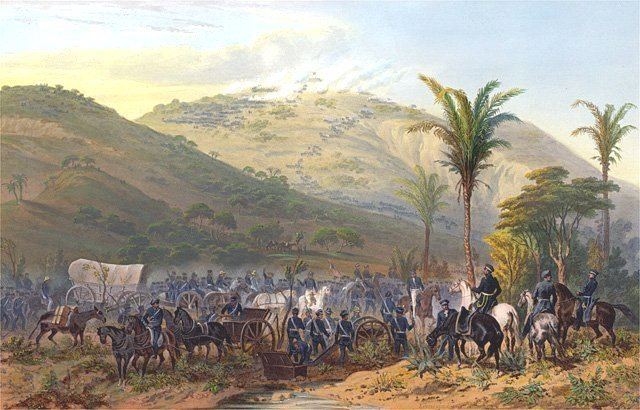 | ||
263 killed368 wounded Over 1,000 killed3,036 captured Similar Mexican–American War, Battle of Churubusco, Battle of Contreras, Battle of Molino del Rey, Battle of Chapultepec | ||
The battle of cerro gordo march
The Battle of Cerro Gordo, or Battle of Sierra Gordo, was an engagement that took place during the Mexican-American War on April 18, 1847. The battle saw Winfield Scott's United States troops out-flank and drive Antonio López de Santa Anna's larger Mexican army from a strong defensive position.
Contents
- The battle of cerro gordo march
- Battle of cerro gordo
- Background
- Battle
- Aftermath
- Eponyms
- Order of battle
- References
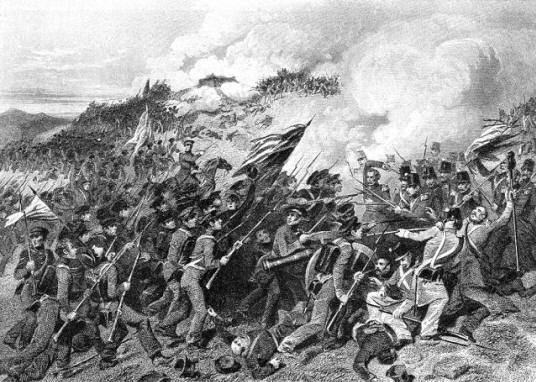
Battle of cerro gordo
Background
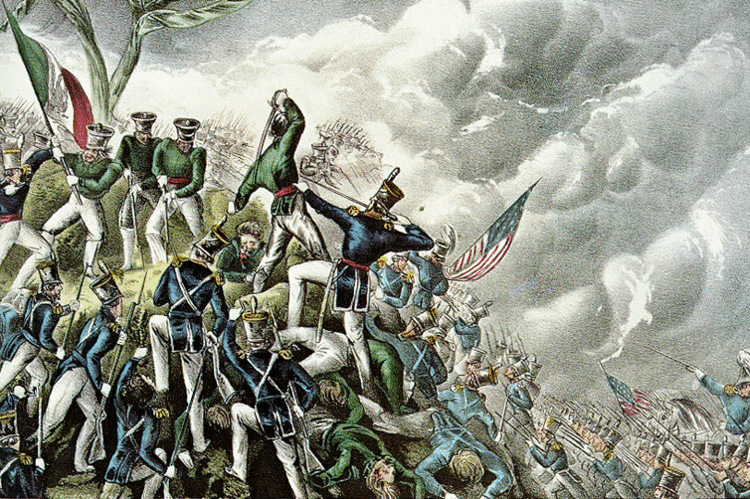
After United States forces captured the port of Veracruz on 29 March 1847, General Winfield Scott advanced towards Mexico City on 2 April by crossing the Rio Antigua. General Antonio López de Santa Anna, commanding Mexican forces in the area, had prepared fortifications at Cerro Gordo, near Xalapa, with more than 12,000 soldiers in a fortified defile, dominated by El Telegrafo. These included several batteries under the command of brigadier generals Luis Pinzon, Jose Maria Jararo, and Romulo Diaz de la Vega. Scott's leading division, commanded by David E. Twiggs, reached the Cerro Gordo Pass on 12 April.
Battle
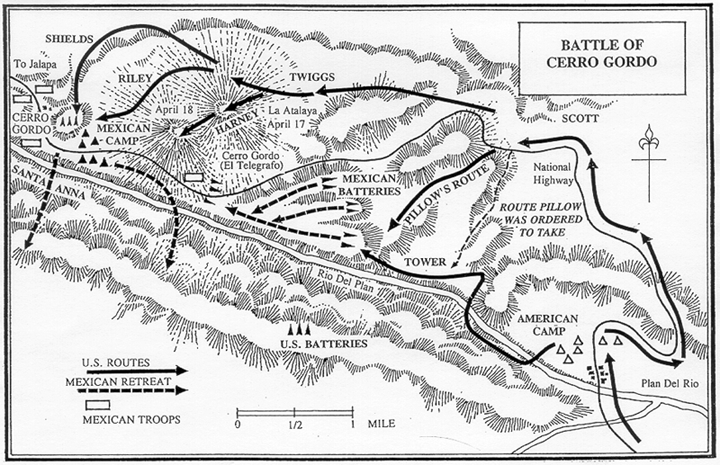
On 12 April, Lieutenant Pierre G. T. Beauregard, of the United States Army Corps of Engineers, determined that possession of Atalaya Hill would enable the Mexican position to be turned. The Personal Memoirs of Ulysses S. Grant observe that, in order to determine if a flanking movement was possible, “reconnaissances were sent out to find, or to make, a road by which the rear of the enemy’s works might be reached without a front attack. These reconnaissances were made under the supervision of Captain Robert E. Lee" and other officers, "all of whom attained rank and fame." Grant continues that it was the roadways constructed by the engineers which achieved victory:
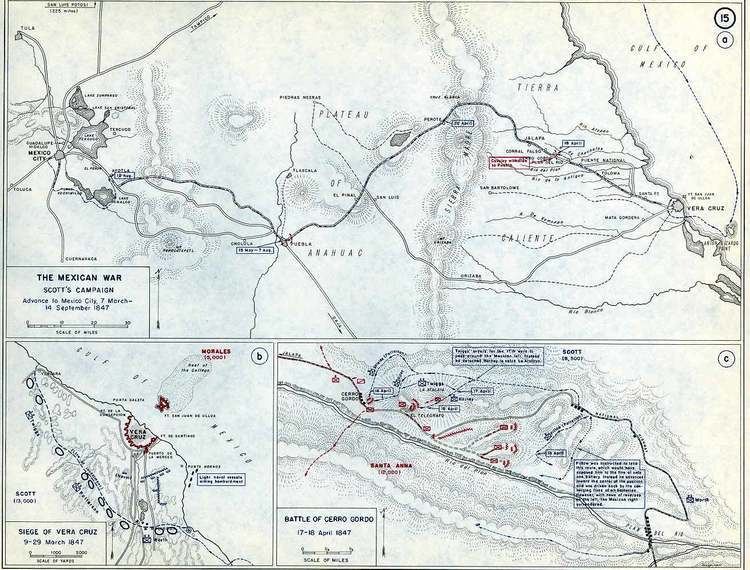
Under the supervision of the engineers, roadways had been opened over chasms to the right where the walls were so steep that men could barely climb them. Animals could not. These had been opened under cover of night, without attracting the notice of the enemy. The engineers, who had directed the opening, led the way and the troops followed. Artillery was let down the steep slopes by hand, the men engaged attaching a strong rope to the rear axle and letting the guns down, a piece at a time, while the men at the ropes kept their ground on top, paying out gradually, while a few at the front directed the course of the piece. In like manner the guns were drawn by hand up the opposite slope.
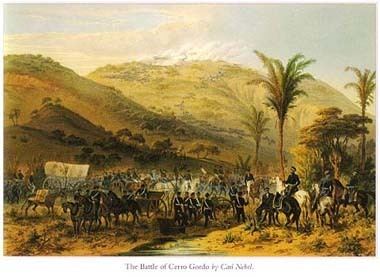
Twiggs' division took the hill on 17 April, advancing up the slopes to El Telegrafo. Santa Anna reinforced El Telegrafo with Brigadier General Ciriaco Vasquez's 2d Light, 4th, and 11th Infantry. Captain Edward J. Steptoe set up his battery on Atalaya Hill and Major James C. Burnham set up a howitzer across the river.
At 7:00 am on 18 April, Twiggs directed William S. Harney's brigade to move against the front of El Telegrafo while Bennett C. Riley attacked from the rear. The combination easily took the hill, killing General Vasquez, and Captain John B. Magruder turned the Mexican guns on the retreating Mexicans. Simultaneously, James Shields' brigade attacked the Mexican camp and took possession of the Jalapa road. Once they realized they were surrounded, the Mexican commanders on the three hills surrendered and by 10:00 am, the remaining Mexican forces fled.
Aftermath
General Santa Anna, caught off guard by the Fourth Regiment of the Illinois Volunteer Infantry, was compelled to ride off without his artificial leg, which was captured by U.S. forces and is still on display at the Illinois State Military Museum in Springfield, Illinois.
Scott moved on to Jalapa, and William J. Worth's division took San Carlos Fortress on 22 April. Scott then occupied Puebla on 15 May, before departing for Mexico City on 7 August.
Eponyms
Cerro Gordo County, Iowa, Cerro Gordo, North Carolina and Cerro Gordo, Illinois take their names from the battle, much as Resaca, Georgia is named for the Battle of Resaca de la Palma.
Order of battle
Mexico was represented by the remnants of the Division of the North, totaling 5,650 personnel: 150 artillery, 4,000 infantry and 1,500 cavalry: including the Ampudia Brigade (the 3rd, 4th, 5th and 11th line infantry regiments), the Vasquez Brigade (the 1st, 2nd, 3rd and 4th light infantry regiments) and the Juvera Cavalry Brigade (5th, 9th Morelia and the Coraceros cavalry regiments); plus reinforcements from the Capitol: the Rangel Brigade (the 6th Infantry Regiment, Grenadiers of the Guard, Libertad and Galeana battalions, two cavalry squadrons and eight guns), the Pinzon Brigade, and the Canalizo Special Cavalry Division. The 1,000-strong Artega Brigade, consisting of the Pueblo Activos and National Guard battalions, arrived at the end of the battle.
